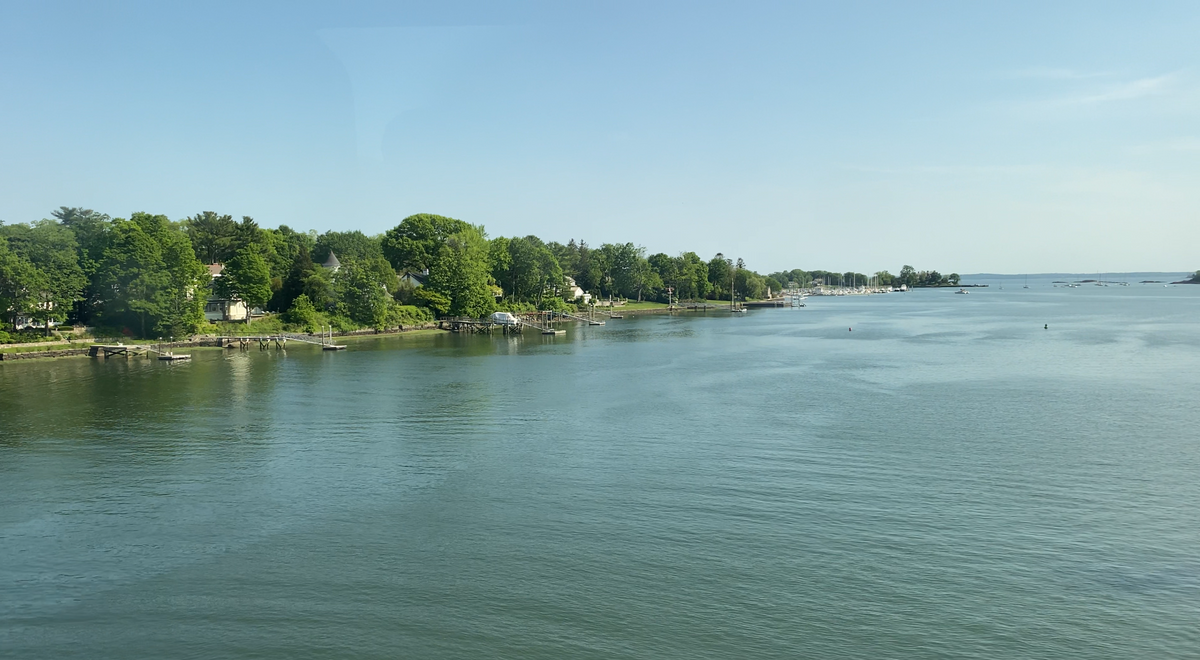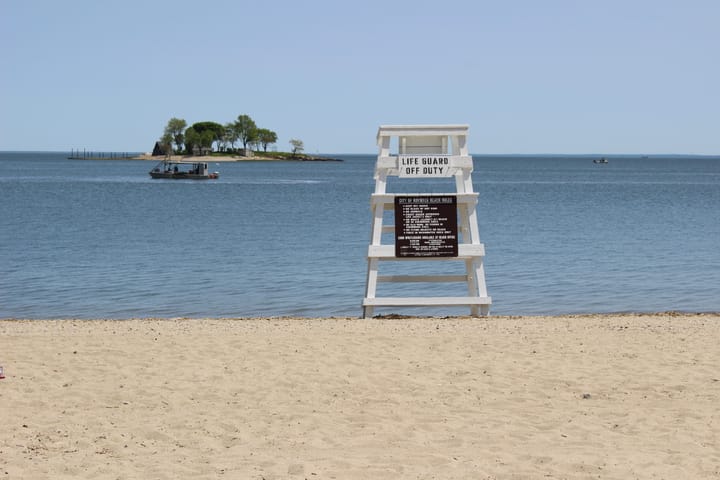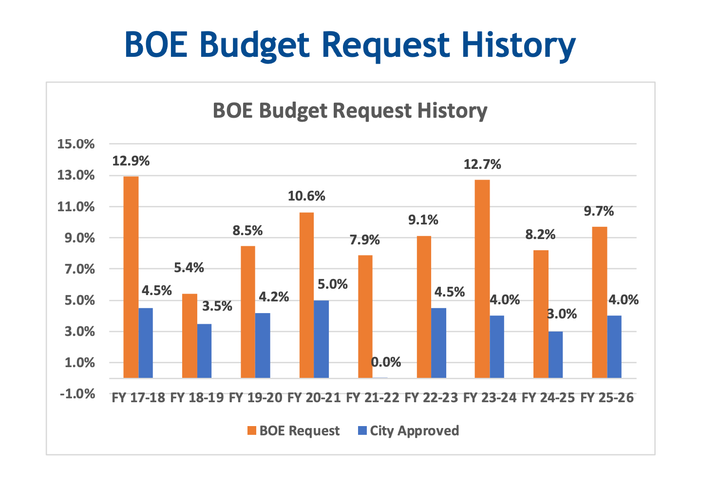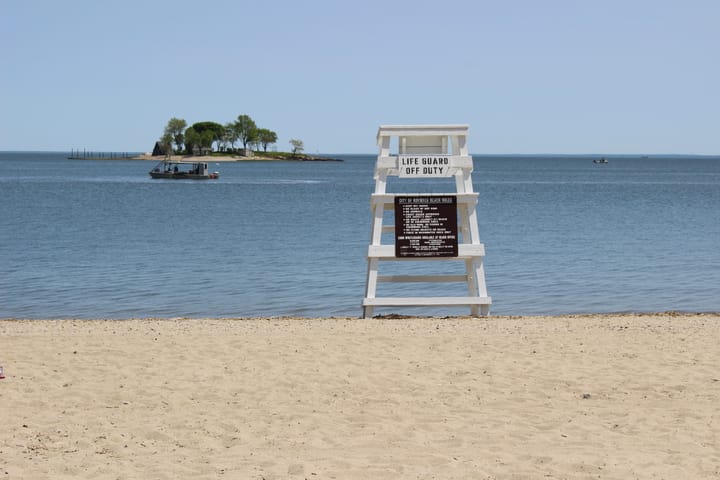Southwest Connecticut Adopts Resolutions, Creates Plans to Address Impacts of Climate Change
Stamford and Greenwich are two of 28 communities across the state who have passed climate change resolutions.

With the number of extreme weather events and impacts to the southwest Connecticut region increasing, local municipalities are working on plans, resolutions, and other calls to action to help mitigate some of climate change’s effects and adapt to others.
Some communities are passing climate change-related resolutions that lay out goals and objectives that attempt to mitigate the effects of climate change, improve infrastructure to help it deal with climate-related impacts, and outline potential next steps. Other communities, even though they haven’t passed a specific resolution, are working on climate-related plans and studies, such as the Resilient South Norwalk project.
With all of these efforts going on, let’s explore some recent plans and actions taken by communities. (Note: This article is focusing on recent activity, within the past year or so.)
Climate Change Resolutions
Greenwich and Stamford have joined 26 other communities across Connecticut in passing “climate action resolutions,” which lay out goals and objectives for the communities in addressing climate change.
Stamford passed its resolution first as the Board of Representatives officially approved the city’s climate change resolution in April 2022, which “declares a climate emergency that threatens the existence of our civilization and the natural world. This resolution provides the foundation upon which the City of Stamford shall develop future priorities legislation, policies, plans, budgets and actions.”
As a part of the resolution, the board askes the mayor and her team to work to reduce greenhouse gas, utilize green energy, and support initiatives such as “providing pedestrian and bicycle infrastructure; improving access to public transportation to reduce vehicle dependency; requiring the use of low-impact development techniques for all city projects; requiring that all city new construction projects be designed as net zero buildings; planting trees throughout the city; providing greater access to electric charging stations for vehicles.”
The board has already used the resolution as the basis for calling on the mayor to support more tree-related initiatives throughout the city.
In addition, Mayor Caroline Simmons, who voiced her support for the resolution, created the city’s first Mayor’s Climate Council, which is tasked with helping to “develop and identify policy recommendations to reduce Stamford’s carbon footprint, incorporate environmental justice, equity, and sustainability throughout City operations, make Stamford more resilient to the effects of climate change, support the creation of green energy jobs, and protect Stamford’s environment.”
“I think this is a really important stance we’re taking as a city to show we’re taking this seriously,” Simmons said at the March 2022 State and Commerce Committee meeting where the resolution was worked on. “I stand in full support of this and also our administration looks forward to partnering with the Board of Representatives on initiatives to make our cities more resilient.”
In Greenwich, students from Greenwich High School began a grassroots movement in the late spring/early summer of 2022 to get the town to pass a climate resolution.
Isabelle Harper, a Greenwich resident who graduated from GHS in 2022, helped spearhead the effort and called on the town’s Board of Selectmen to pass the resolution to help “make changes while it’s still possible.”
“The Greenwich Environmental Advocacy Group has introduced this climate resolution to ignite action in Greenwich,” she told the Board in June 2022 when the resolution was introduced. “This future is a scary future for people my age—this is an emergency for us.”
After proposing an initial resolution, the students and their mentors spent months working with people from all backgrounds in the town—elected leaders, town department heads and employees, community members, environmental groups—to rework it and incorporate their feedback.
As the Board passed the resolution in August, First Selectman Fred Camillo said that the resolution both helped consider voices from a variety of perspectives and laid out a good base for the town to keep environmental issues at top of mind.
“I want to thank everybody—we heard from people on both sides. Every single one of them was heard. I think we incorporated everybody’s concerns—that’s government. Everything is a compromise but we think this is actually a good blueprint for the town,” Camillo said. “I think this shows that the town takes the environment very, very seriously, that we can lead, but we can do so responsibly and make it local.”
The resolution acknowledges that the town has already felt some of the impacts of climate change, and that those impacts will only increase.
“The Town of Greenwich has experienced extreme weather events, including severe storms, drought, and intense heat, which have resulted in increased risks to public health, loss of power and basic utilities, high riverine floodwaters, inland and coastal flooding,” the resolution reads. “[And] there have been 14 extreme weather events in the state of Connecticut since 2012, including Ida, which caused an estimated $16 to $24 billion in flooding damage in the Northeastern United States, making it the costliest storm to hit the region since Hurricane Sandy.”
But it also states that “local communities play a crucial role in addressing climate change,” which is why it calls on the town to prioritize “ways to advance sustainability and climate resiliency whenever Town departments develop future departmental priorities, policies, plans, budgets, and actions” and develop a “Sustainability and Climate Resiliency Plan by December 2023.”
Climate Action Plans
As a part of their resolution, Greenwich aims to develop a “Sustainability and Climate Resiliency Plan by December 2023,” which would include strategies related to renewable energy, new buildings, transportation, solid waste, land use, town operations, and more.
Norwalk is also working on its own climate plan. The city’s Sustainability and Resilience Committee of the Common Council, along with the Norwalk Redevelopment Agency, is working with consultant SLR to develop a Climate Action and Sustainability Plan. The plan aims to add to other ongoing efforts, like Resilient South Norwalk, by connecting them together and breaking them down into actionable items, such as outlining how the Finance Department can find grants for projects or what efforts the Planning and Zoning department can take to make buildings more resilient.
Right now, the consultants are meeting with city employees, but there will be public meetings in a few weeks to understand what the climate action plan will look like.
State Partnerships
Norwalk is also working closely with CIRCA—Connecticut Institute for Resilience & Climate Adaptation—on multiple climate-related initiatives including a heat sensor mapping project to detect where the city’s heat islands are as well as a Resilient South Norwalk project that aims to: address heat and flood impacts in South Norwalk. The area was chosen due to its large amount of impervious surfaces that lack tree canopy; the affordable housing in the area; the fact that more housing is planned in transit-oriented development areas, and that it’s along Long Island Sound.
At the first meeting, held in January, residents had a chance to share their experiences on the ground to help provide information to CIRCA.
Many residents shared stories of flooding—particularly on Water Street—and asked the consultants about why more building was being permitted in areas that are known to flood. Questions also came up about the new South Norwalk school and if that would be in the middle of a flood zone.
CIRCA broke South Norwalk into three main study areas:
- North Study Zone: Runs from the railroad over to Water Street and includes areas such as Soundview Landing and Washington Street
- Central Study Zone: Includes Woodward Avenue and Meadow Street, as well as parts of Shorefront Park and Harbor Shores
- South Study Zone: Including Village Creek and Harborview neighborhoods, and runs down to Manresa Island.
This approach allowed them to really address specific situations that occur in each one, officials said, such as how certain areas get hotter than others or what the flooding reasons are—tidal vs. infrastructure.
CIRCA officials said that they were collecting the feedback and working to incorporate it into their work before the next public meeting, which should be in about a month.
Fairfield is also working closely with CIRCA in particular to address flooding underneath the four train overpasses in town.
“Flooding in these locations occurs following heavy rainfall and can be exacerbated when combined with a high tide,” a statement from CIRCA reads. “These underpasses are key north/south connections between the town’s shoreline and interior sections.”
Officials from CIRCA held the first of three public engagement sessions this past week on March 2, where residents could meet the team, learn about the project, and provide feedback.
How can you get involved?
Looking to work with your community on addressing some of the impacts of climate change locally? Here’s a few ways you can get involved.
- Write to your local officials supporting the initiatives that are already in place or suggesting new ones of your own.
- Join local groups and organizations working on climate-related issues, such as Sustainable Fairfield or Sustainable Streets Norwalk
- Attend meetings related to some of these programs and initiatives such as Resilient South Norwalk
- Voice your thoughts on funding for these types of efforts at your budget hearings.



